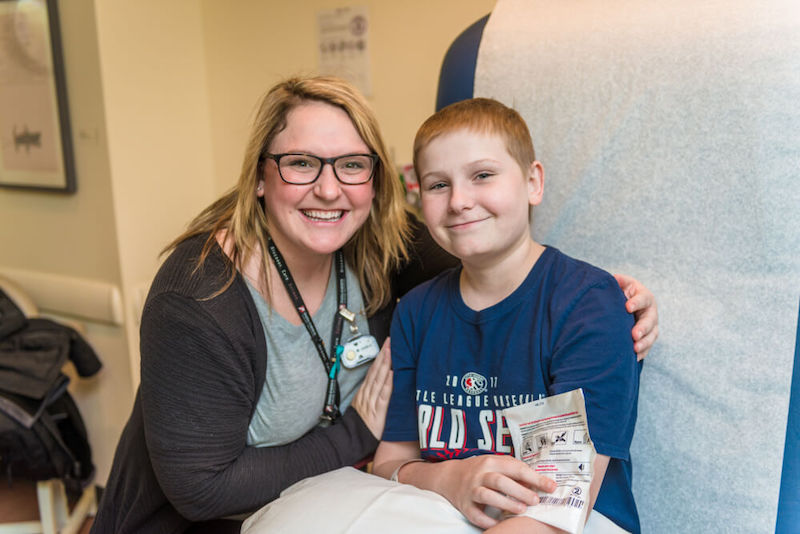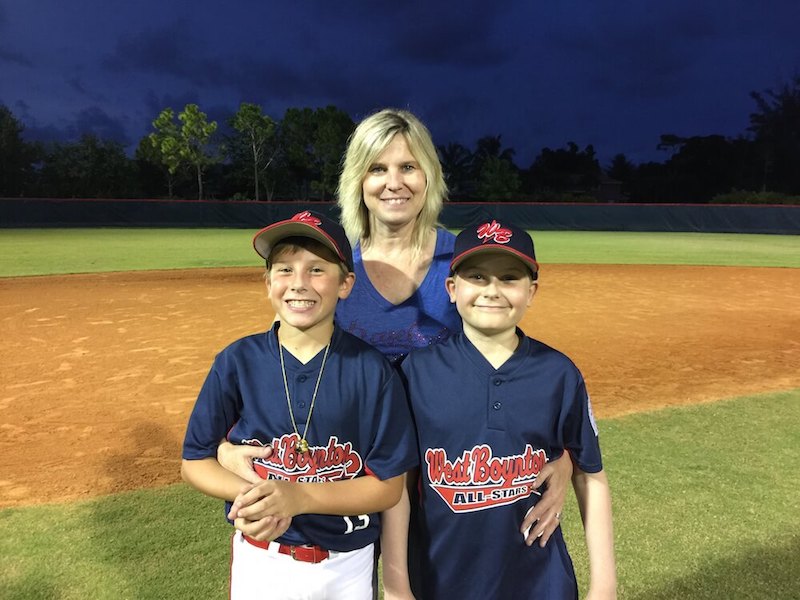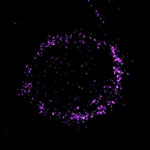Cole: Having a ball after CAR T-cell therapy

After undergoing a promising new treatment for acute lymphoblastic leukemia (ALL), Cole Malone is back to doing what he loves: playing on a flag football team with his twin brother, Michael.
Cole and Michael, 14, already know plenty about teamwork. Michael served as a perfect-match donor when Cole had a stem cell transplant at Dana-Farber/Boston Children’s Cancer and Blood Disorders Center in 2014. When Cole’s cancer relapsed a second time in early 2018, he became one of the first Dana-Farber/Boston Children’s patients to have CAR T-cell therapy, a promising new treatment for some of the most challenging cases in pediatric ALL.
“It’s going to feel really good to go back to my normal self and everything I was doing before this all happened,” says Cole. “Football in the winter, and then baseball in the spring.”
Traveling to Boston for complex care
Cole receives general cancer care near his family’s Florida home, but his doctors there sent the family to the experts at Dana-Farber/Boston Children’s for the more complex procedures he needed, including his stem cell transplant and CAR T-cell therapy. Dana-Farber/Boston Children’s is a certified treatment center for KYMRIAH, an FDA-approved CAR T-cell therapy designed specifically for ALL patients ages 25 or younger who have relapsed at least twice.
“CAR T-cell therapy, including KYMRIAH, has been a real game-changer for patients like Cole who are unable to undergo a first or repeat transplant,” says Dr. Steven Margossian, Cole’s oncologist at Dana-Farber/Boston Children’s. “We have something to offer them that gives them a real chance at a sustained cure, though patients still need to be closely followed to monitor the CAR T-cells that are still active.”

Although football and baseball are his favorite sports, Cole’s cancer treatment might best be compared to a marathon. He was first diagnosed with ALL at age 2, after an abnormal blood test during a wellness visit at his pediatrician. After three years of chemotherapy treatment in Florida, he was declared cancer-free, but then four years later, when he was 9, an eye exam revealed a swollen optic nerve. The cancer had now spread to his central nervous system, and the Malone family was referred to Dana-Farber/Boston Children’s.
Cole needed a stem cell transplant, and the entire family did a cheek swab test to see if they were donor-compatible. Michael scored a perfect 10 out of 10 as a match. After playing in a “Cole Strong” baseball tournament held in their West Boynton, Florida community to help defray the family’s expenses, Michael headed to Boston for his life-saving donation.
“I just wanted to do anything to help my brother,” says Michael. “It was great to be able to be there for him, and to play in his tournament.”
The latest obstacle for Cole came in February 2018. He was getting ready for a flag football game when he suddenly lost sensation on the left side of his body. Tests confirmed the leukemia was back, so the family returned to Boston and Cole started on the KYMRIAH CAR T-cell therapy.
Back to sports, sibling rivalry
Now, even though he is back to playing sports, Cole continues to be monitored closely. He sees his oncologist in Florida every month, and saw Dr. Margossian for a six-month evaluation just after Christmas.

Everything is going very smoothly for Cole now, but he still needs regular visits and immunoglobulin replacement,” says Dr. Margossian. “CAR T-cells also destroy normal B-lymphocytes, the cells in the body that are responsible for producing antibodies, and have acute effects on blood pressure and neurologic toxicities.
In the meantime, Cole has returned to life as usual.
“I know Cole is feeling better because he has begun to fight with his brother again,” his dad, Chris, says with a laugh.
Learn more about CAR T-cell therapy at Dana-Farber/Boston Children’s.
Related Posts :
-

A new druggable cancer target: RNA-binding proteins on the cell surface
In 2021, research led by Ryan Flynn, MD, PhD, and his mentor, Nobel laureate Carolyn Bertozzi, PhD, opened a new chapter ...
-

Forecasting the future for childhood cancer survivors
Children are much more likely to survive cancer today than 50 years ago. Unfortunately, as adults, many of them develop cardiovascular ...
-

Pediatric high-grade gliomas: Research reveals effective targeting with avapritinib
Pediatric high-grade gliomas, particularly H3K27M diffuse midline gliomas (DMG), are aggressive malignant brain tumors with a poor prognosis. ...
-

Blood across our lifetimes: An age-specific ‘atlas’ tells a dynamic story
The stem cells that form our blood, also known as hematopoietic stem cells (HSCs), are with us throughout our lives. ...





